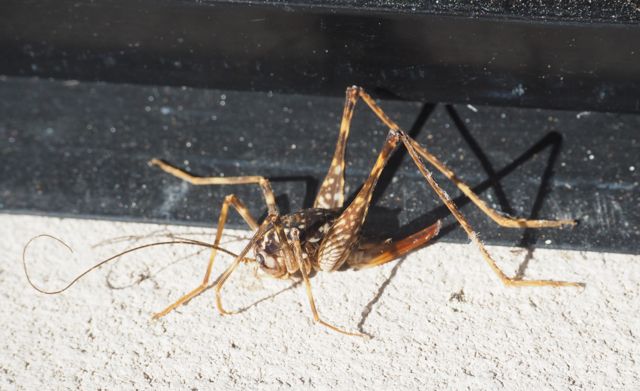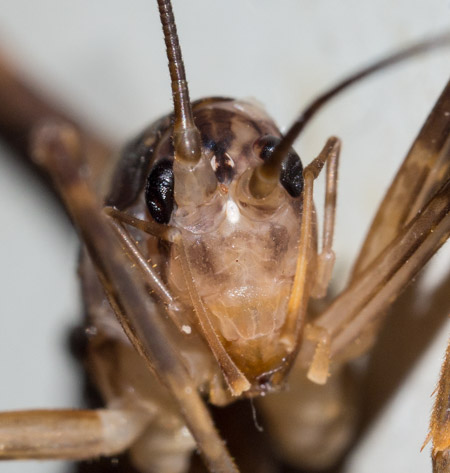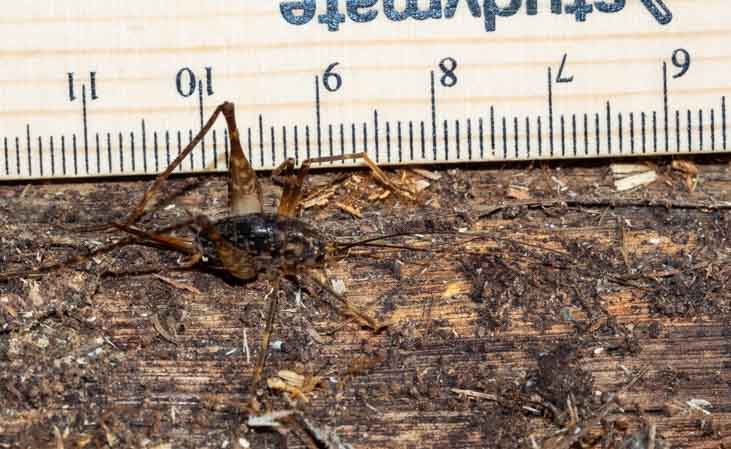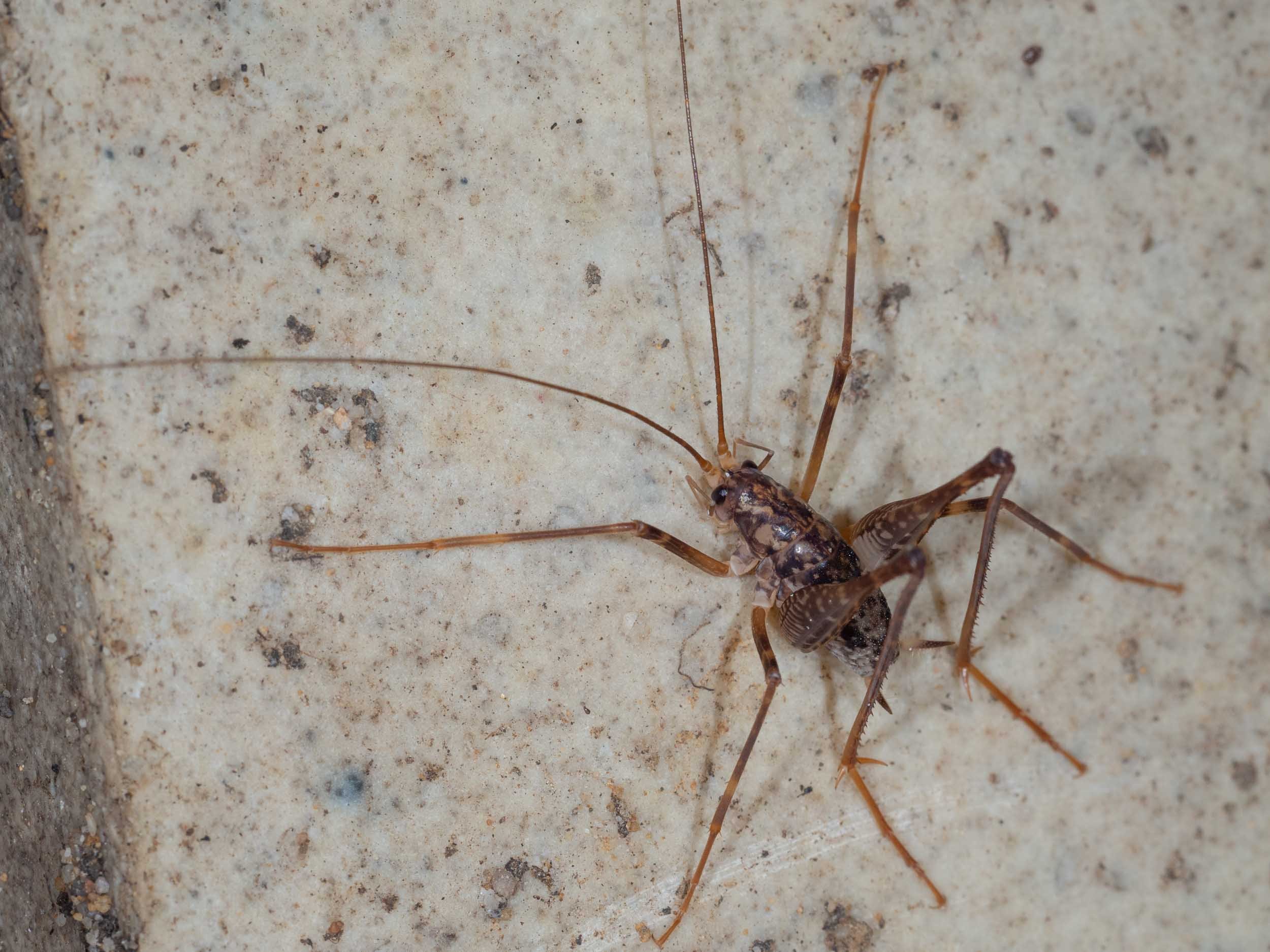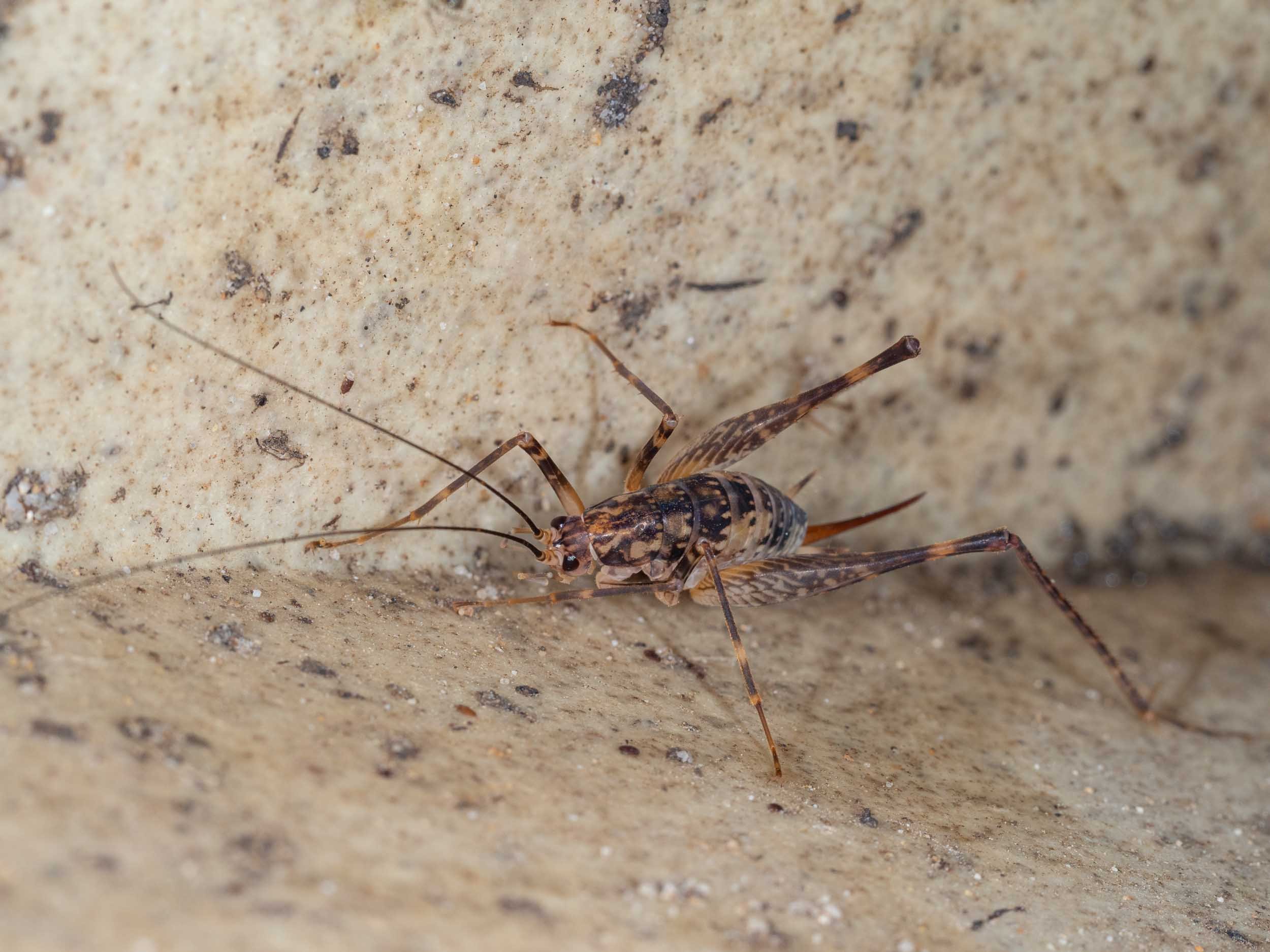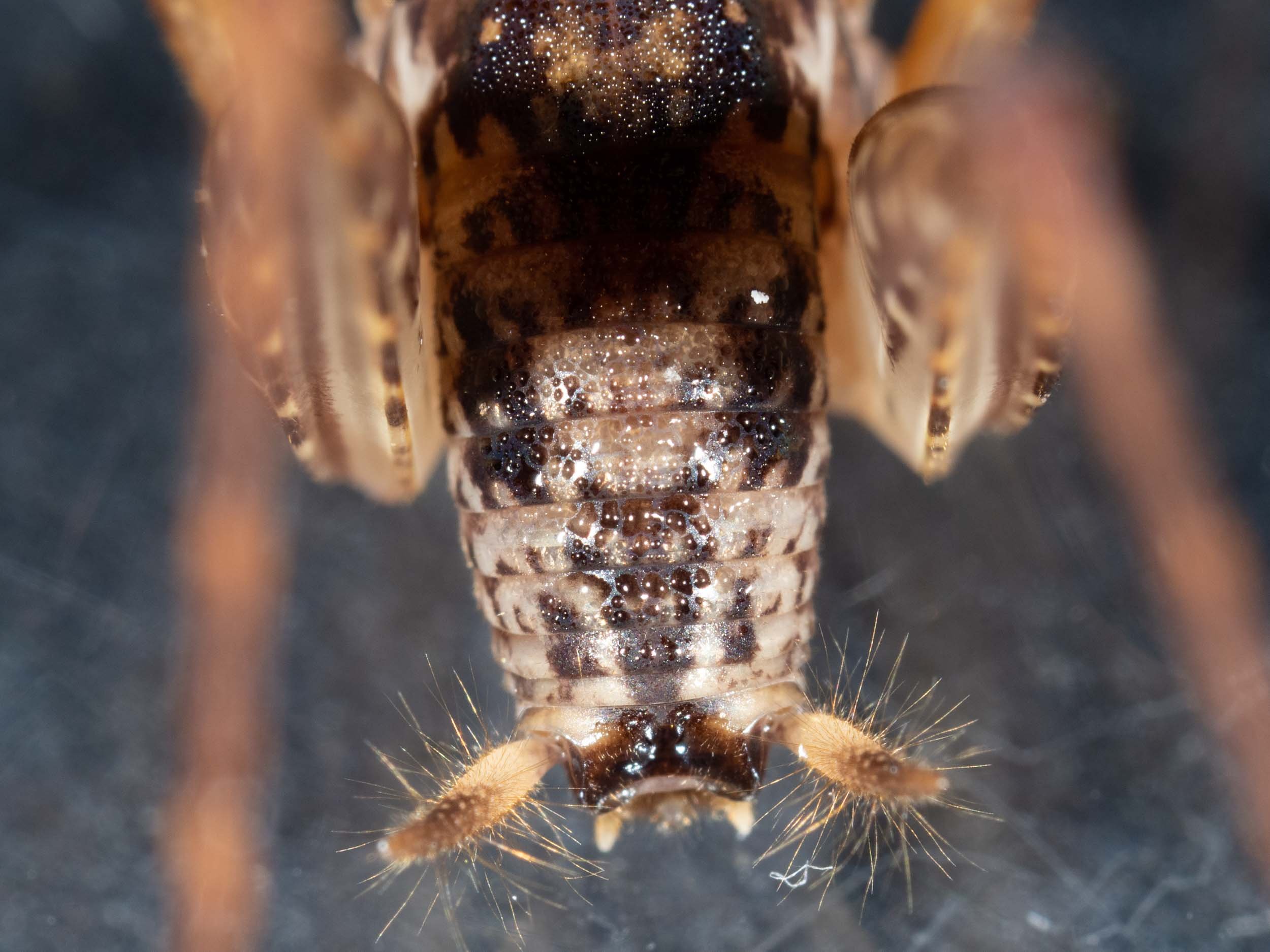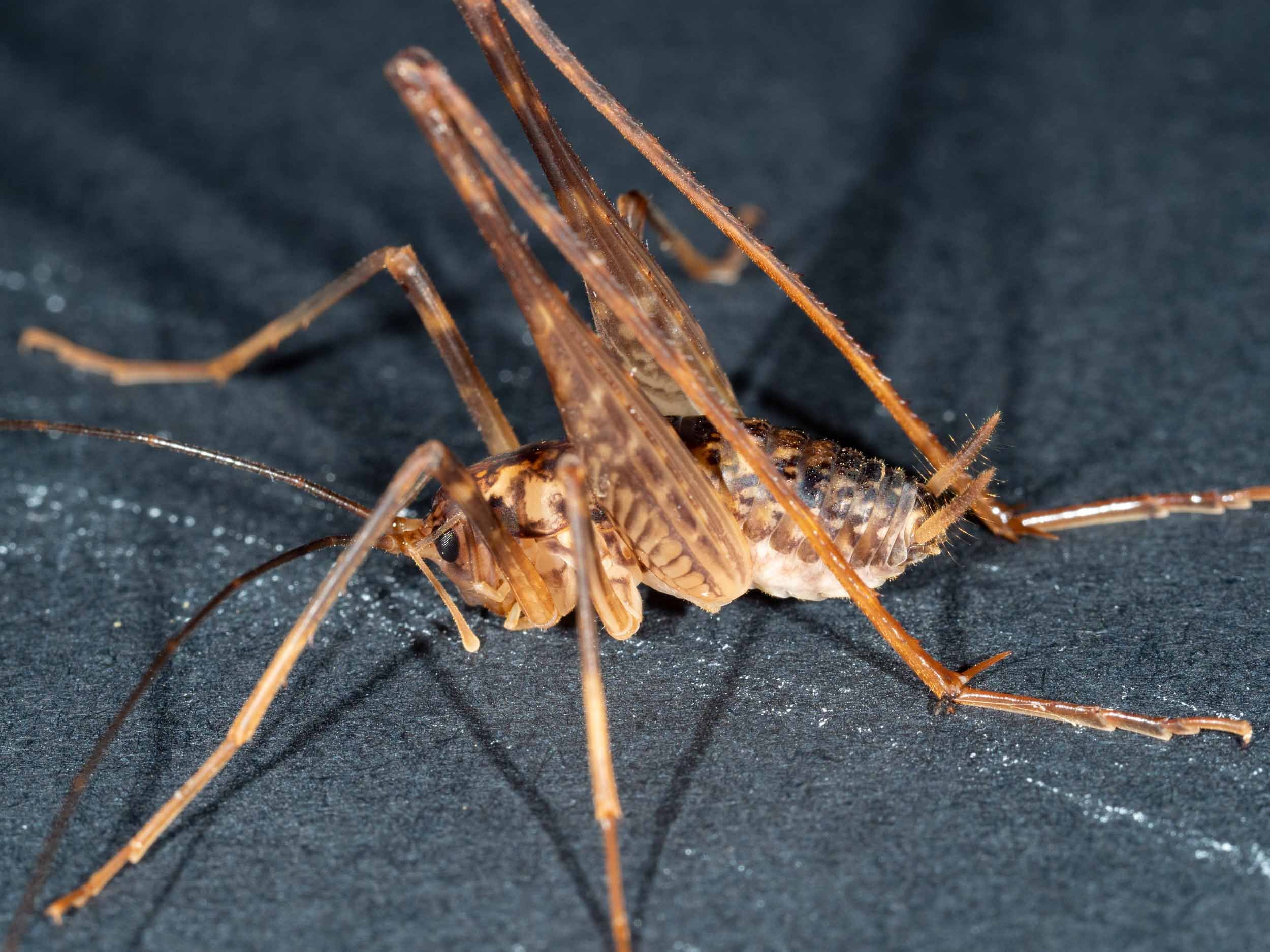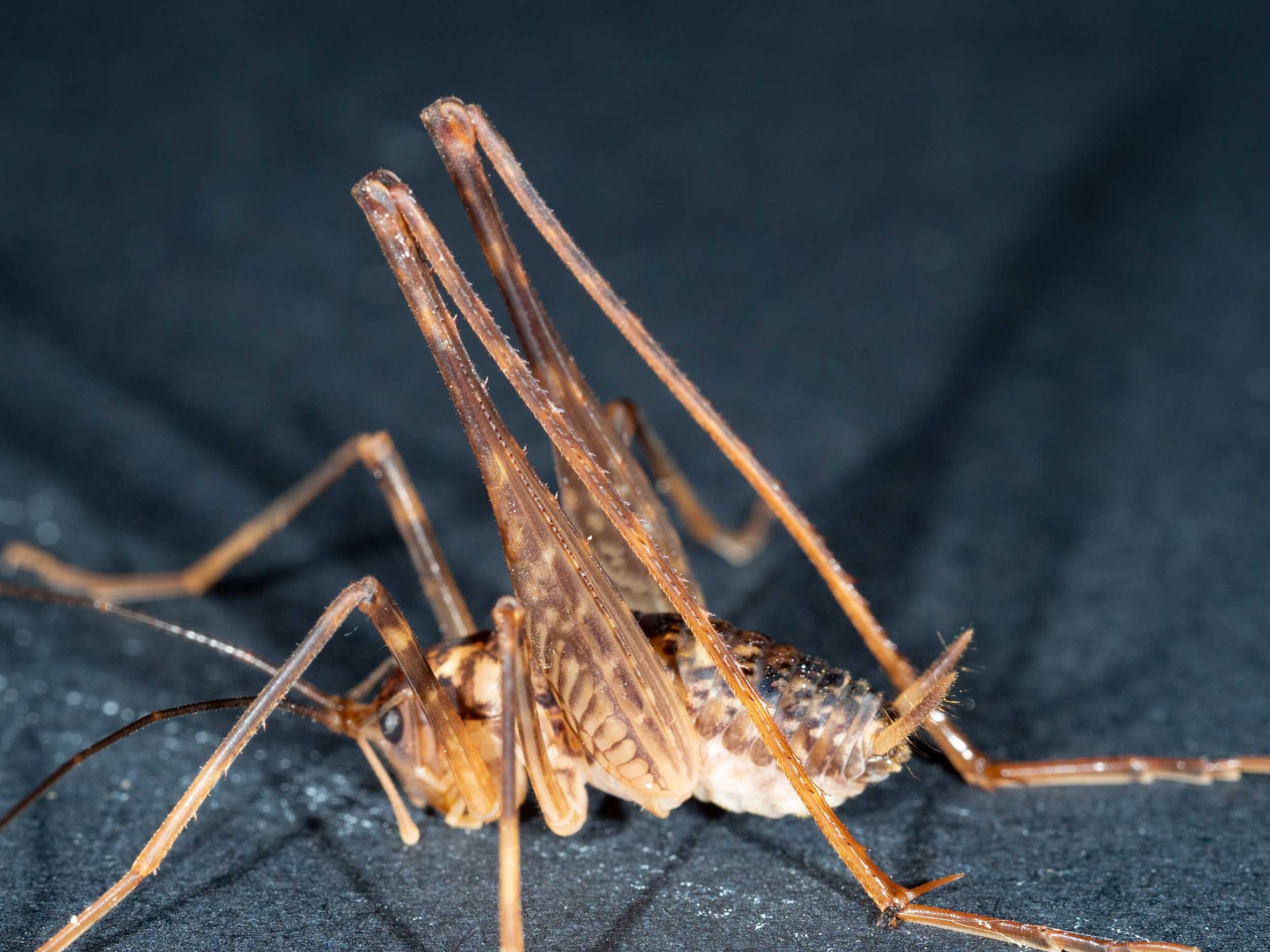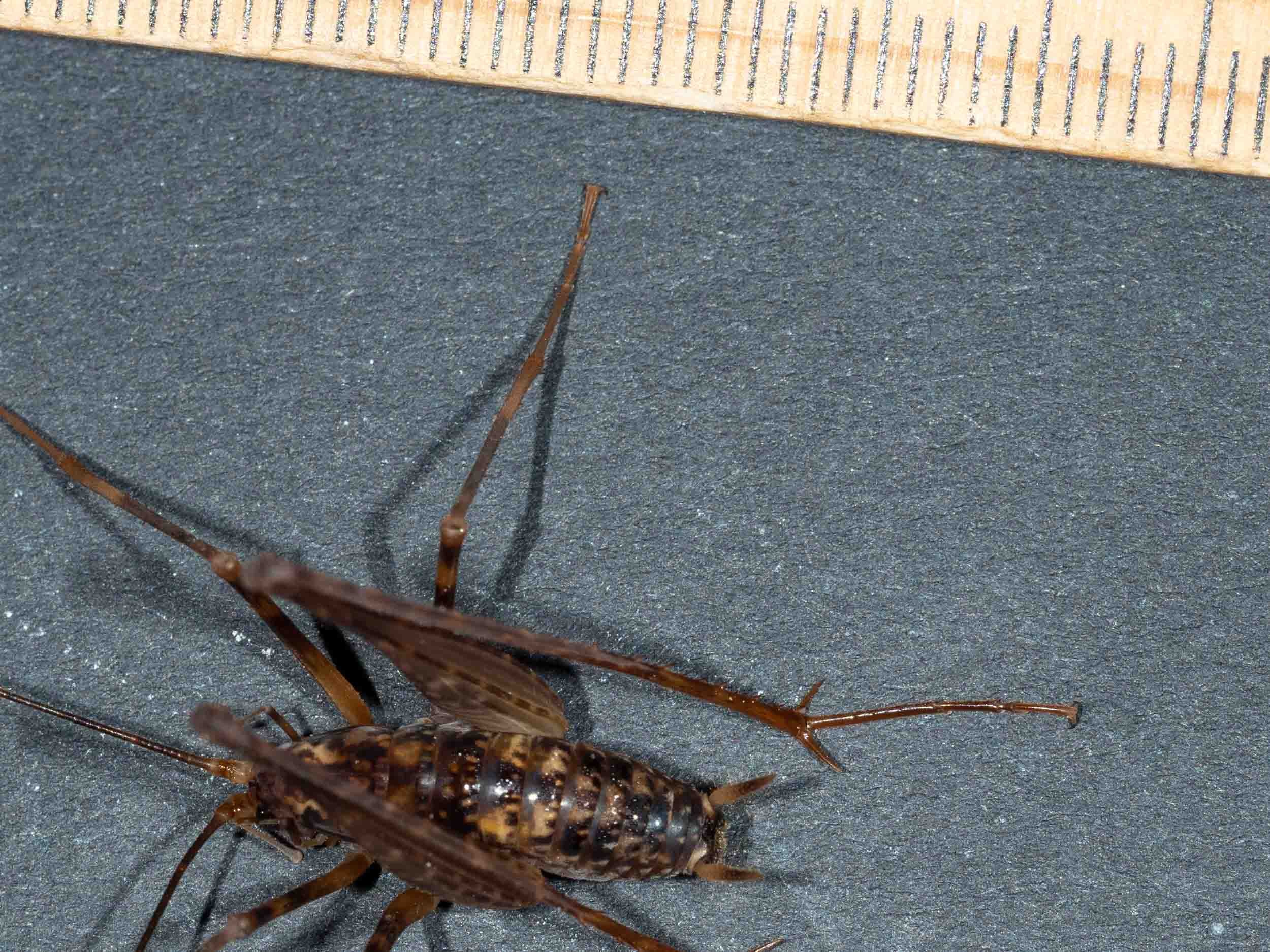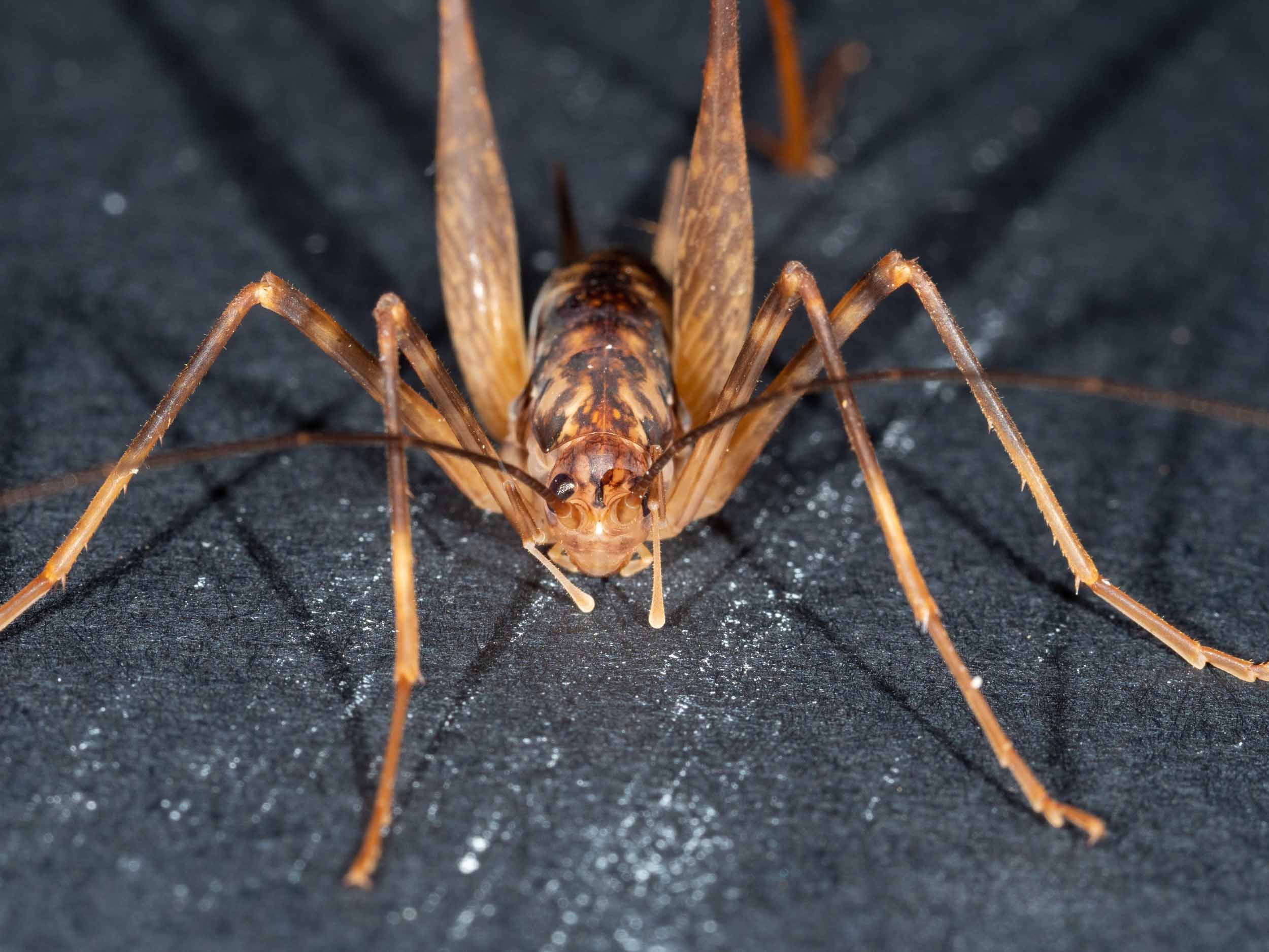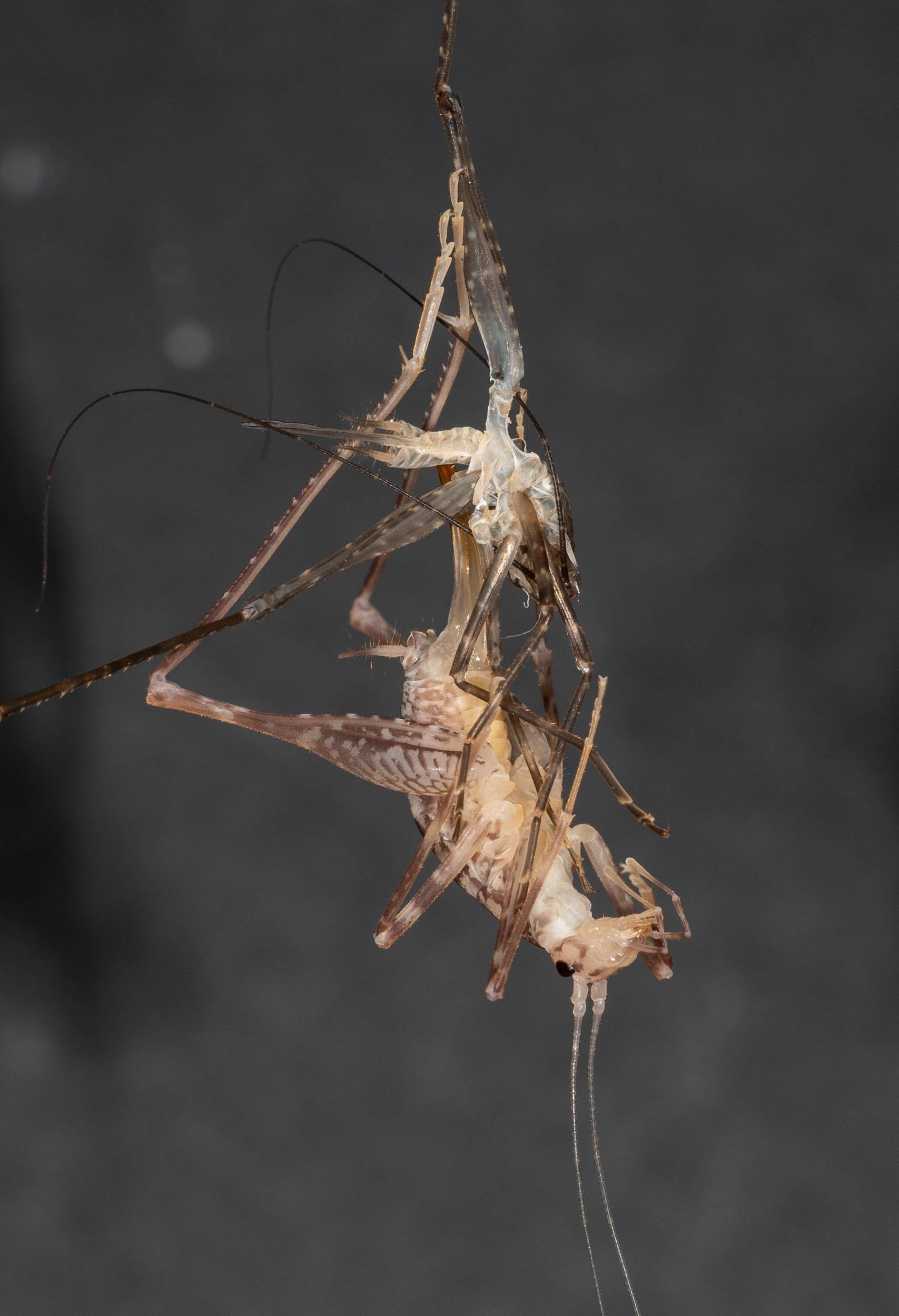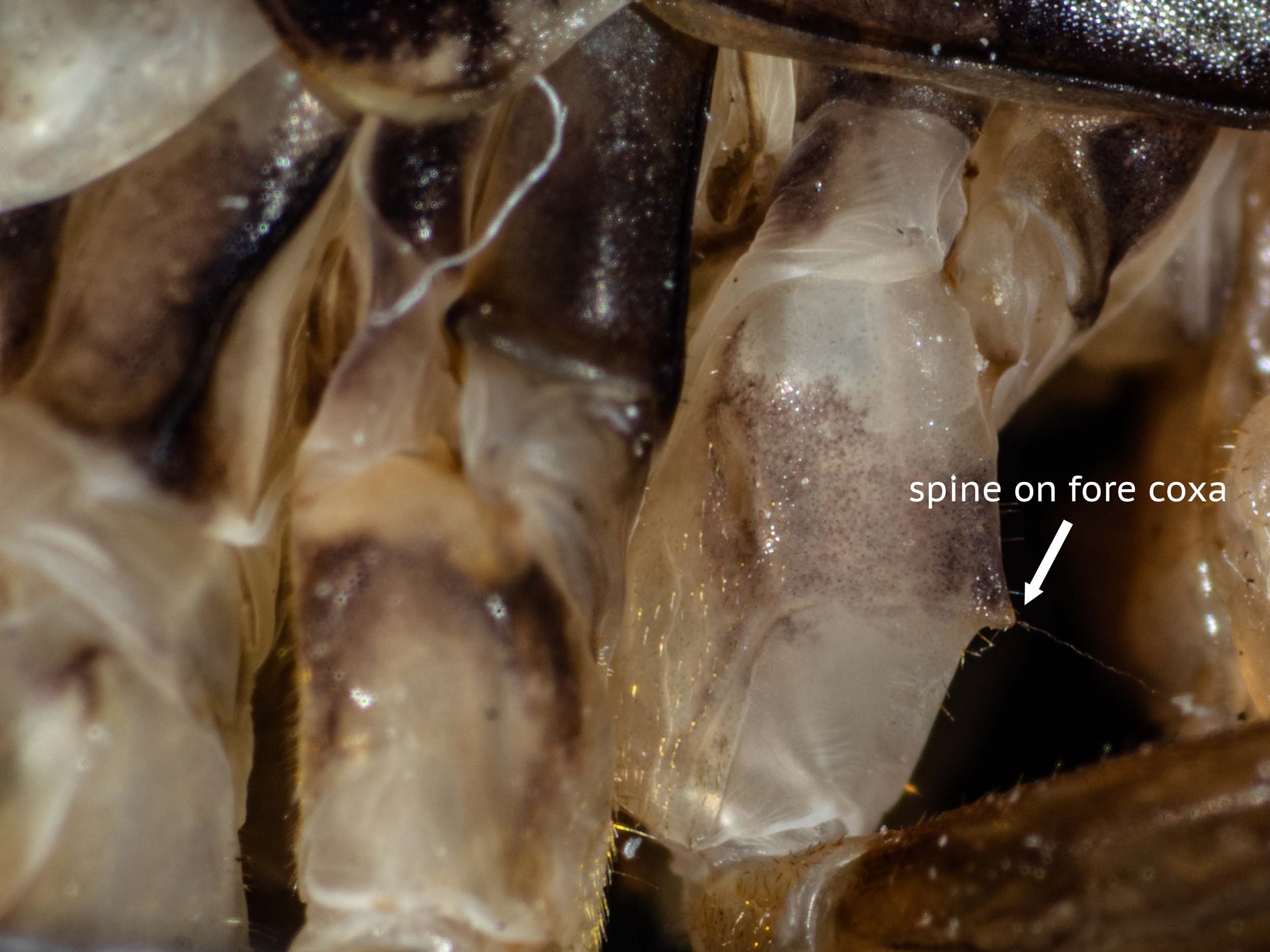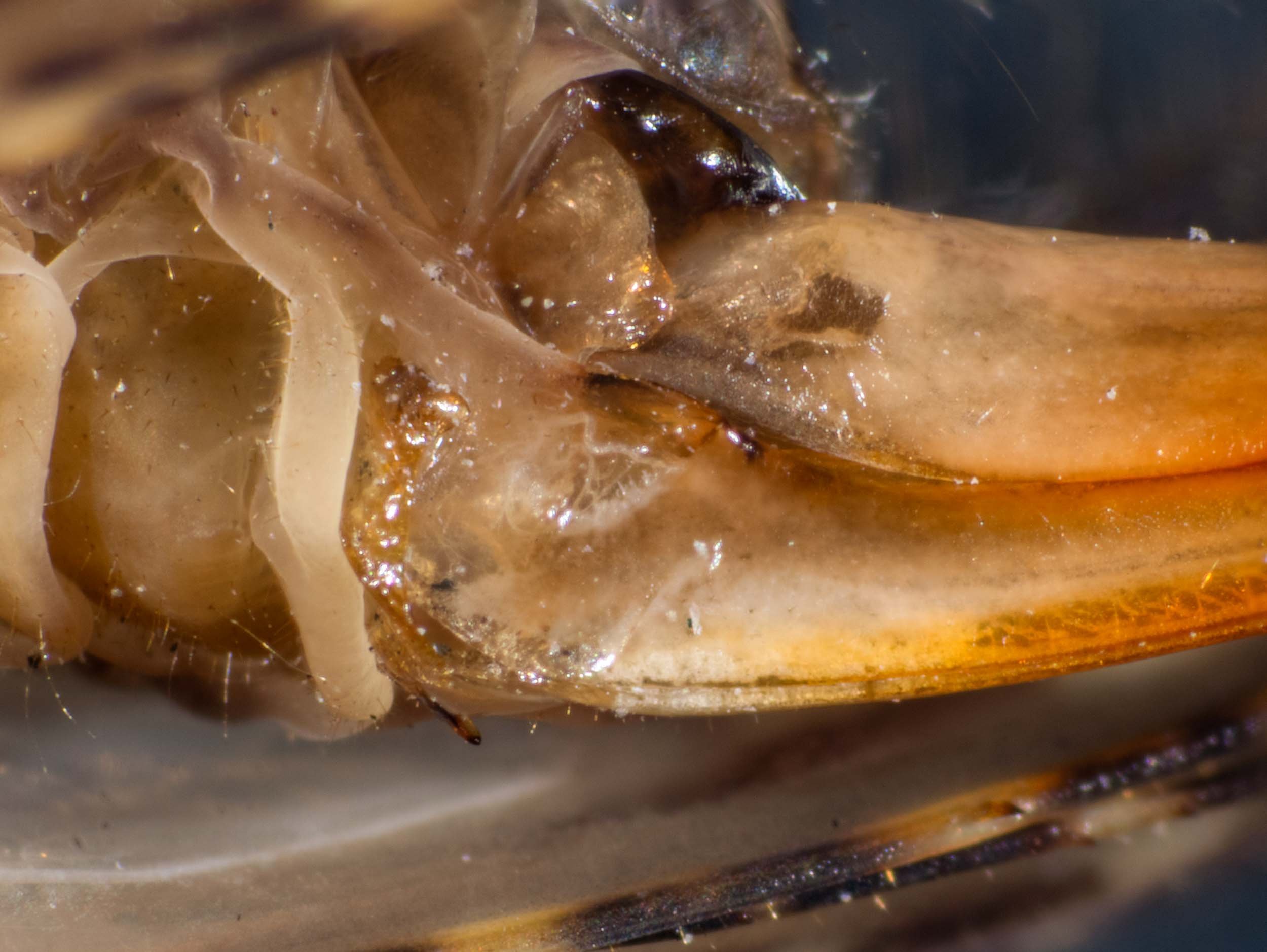Cavernotettix montanus (?)
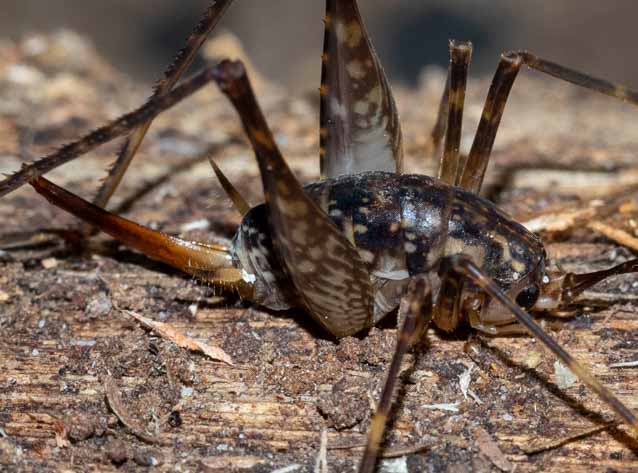
Workbook
Sightings made at home
Camel crickets found at home on 18/10/14 (on bedroom window sill), 4/5/16 (on deck), 15/5/18 (in Esky tub covering biolytix pipework).
All females, body length 10mm, ovipositor 10mm
Identification to genus
Micropathus and Parvotettix are only found in Tasmania and islands of Bass Strait
Only two genera found on mainland - Cavernotettix and Australotettix
Australotettix species are much larger than ours and morphology of subgenital plate differs from ours
Presence of retrolateral spine on fore coxa points to Cavernotettix, three species of which (including C. buchanensis) have been found in SE region.
Need to read Richards, A.M. 1966 Pacific Insects 8: 619-622 in which the genus Cavernotettix was erected to confirm genus.
Identification of species
Can eliminate C. craggiensis as this species has female body length of 17-19mm, ovipositor only 0.7 length of body and ovipositor has 8 small teeth. Also my species has many fewer spines on retrolateral side of femur than C. craggiensis.
C. flindersensis is larger (22mm male, 20mm female) and has spines on fore and middle femur.
C. buchanensis has thick coating of setae on suranal plate of female.
C. wyanbenensis has over 30 retrolateral spines on hind femur in female.
Counts of spines on femur of my species:
R femur - prolateral 34 spines, - retrolateral 4
L femur - prolateral 27 spines, - retrolateral 5-6 spines
Using Richards 1974, my species keys out to C. montanus on following criteria:
retrolateral spine on fore coxa
fore and middle femora without linear spines
suranal plate of female sparsely clothed with setae
fewer than 27 retrolateral linear spines on hind femur
This species has been seen in Yarrangobilly caves, which are relatively close. I do not know the morphology of this species. Need Richards 1966 paper in Pacific Insects 8(3) : 617-28 to get a description.
August 2022 - Discovery of more cave crickets
7th August
While digging a shallow trench around the perimeter of the Biolytix tank, I turned over the protective concrete box which covers the control module. I found a number of cave crickets inside and photographed them. One male was removed for imaging inside and cover was replaced.
Further images of #1 male
Further images of #2 male (taken on 8th August)
8th August
Cover was turned over, revealing that the #3 female found on the previous day was in the process of moulting. She was brought inside and suspended vertically to aid ecdysis. Movies and still photos were taken of her.
The following movies were taken over a period of approximately 1hr 15min.
A moulting female nymph (7.5mm body length) was discovered at the bottom of the concrete box. We set it up to image but moulting had failed. The female had torn off its right hind leg and could not extract the tarsi of its other legs.
We euthenased it and kept it in a vial.
Two other smaller nymphs (#4, #5) were also found in the box. These were removed and imaged.
All living animals were placed in the buddy tank. A large cardboard box with a small opening cut into the bottom was placed in the tank. Soil from one of the compost bins which contained worms, collembolans and other invertebrates was included along with fish flake food, which they accepted.
A dead adult female cave cricket (#6) was found on the floor of the room with the tank. It is unclear how she came to be there. This animal was imaged to show key features.
Body length 13.5mm.
Fastigium longer than high. Grooved longitudinally.
No spines in fore and mid femur.
Spines on hind femur: R. retrolateral 5, prolateral 33; L. retrolateral 4, prolateral 43. The prolateral spines are smaller than the retrolateral ones and are of variable size. On both the right and left femur, approx. 16 of these retrolateral spines are noticeably larger than the remainder.
Fine setae on dorsal surface of body.
Ovipositor 10mm long.
The animals in the holding tank have been feeding and moving about, spending time both inside and outside the cardboard box. However, on 19th August a dead animal (#2 adult male) was found in the bottom of the tank. Placed in vial in absolute ethanol on 24th August.
Perry Beasley-Hall replied to our email on 23rd August, saying that she would like to receive our collected animals.
24th August
We placed all of the remaining living animals (one adult male, one adult female and two nymphs) in the freezer. These were all moving and appeared healthy immediately before this. All animals were placed in 100% ethanol in separate vials and mailed to Perry on 29th August 2020.

